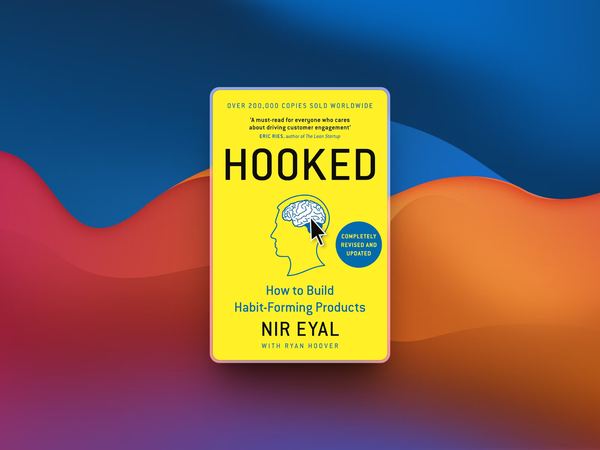Good UX writing is super important.
As more businesses realise how much words can shape user experiences, it’s clear we need to focus on writing that really connects with users.
Let’s take a look at some practical tips to improve UX writing and make those user interactions smoother.
What’s UX Writing All About?
At its core, UX writing is all about the words that help users interact with digital products.
Good UX writing makes it easier to find your way around, explains features clearly, and builds user confidence. Keeping your writing clear, concise, and relevant is key to effective UX communication.
Know Your Audience
Before you start typing, get to know who you're writing for. Who are they? What do they need? Doing a bit of user research can really help.
Creating user personas is a great way to connect with your audience and write in a way that meets their expectations. When you know your audience, you can choose language that hits home, making your content more relatable and effective.
Find Your Voice and Tone
Being consistent with your voice and tone is crucial for good UX writing. Your brand's voice should reflect its personality. Are you friendly, formal, playful, or a bit more serious? Having a clear voice helps users feel a connection.
Your tone can change depending on the context. For example, if there’s an error message, you want it to feel supportive rather than harsh. Paying attention to both voice and tone helps create a more cohesive and approachable experience.
Clarity Over Cleverness
While clever phrases can be fun, clarity is what really matters in UX writing. Users are often looking for quick answers and don’t want to waste time trying to figure out what you mean. If your writing is ambiguous or too clever, it can confuse them.
Instead of fancy wording or jargon, go for a straightforward language that gets your point across. Instead of saying "Get your ducks in a row," just say, "Organise your tasks." Simple, right?
Smart Use of Microcopy
Microcopy is the little bits of text that guide users through an interface—like button labels and error messages. Good microcopy is vital for a smooth user experience. Here are some tips for writing effective microcopy:
- Be Specific: Instead of using a generic label like “Submit,” go for something more descriptive, like “Create Account” or “Download Report.” This helps users know exactly what to expect.
- Give Context: Help users understand why they should take an action. For example, in a sign-up form, you might add a line like, "Join to access exclusive content."
- Use Friendly Reminders: Encourage users with your microcopy. Instead of saying "Password must contain at least 8 characters," try "For a stronger password, aim for at least 8 characters!"
Focus on User Intent
Understanding what users want is key to crafting good UX writing. Why are they visiting your site? What are they hoping to achieve? Align your content with their goals. If they’re looking for help, make sure your support documentation is easy to find and understand.
By anticipating what users need, you can provide the right information without any hassle. This not only boosts satisfaction but also builds trust in your brand.
Make It Scannable
Let’s be real—most users skim through content instead of reading it word for word. To help with that, structure your writing so it’s easy to scan:
- Use Headings and Subheadings: Break your content into sections with clear headings. This way, users can quickly find what they’re looking for.
- Bullet Points and Lists: Present information in bullet points or numbered lists. They’re easier to skim and can highlight important points.
- Keep Paragraphs Short: Short paragraphs keep readers engaged. Long chunks of text can be overwhelming and make users less likely to stick around.
Test and Improve
Great UX writing isn’t a one-and-done thing. It takes testing and tweaking. Do some usability tests to get feedback on your writing. Watch how users interact with your content and see if they get the message you’re trying to convey.
A/B testing can be super helpful too. Try out different versions of your copy to see which one works best. By continuously testing and improving, you can make sure your writing meets user needs.
Work with Designers and Developers
UX writing doesn’t happen in a bubble.
Teaming up with designers and developers throughout the product development process is really important. Working closely with these folks helps make sure your writing fits well with the visual design and functionality of the product.
Join in on design sprints or daily meetings to keep communication flowing and make sure your writing aligns with the overall user experience. This teamwork can lead to a more cohesive and user-friendly product.
Be Mindful of Accessibility
Good UX writing should consider all users, including those with different abilities. Aim to make your content accessible to everyone. Here are some tips:
- Use Simple Language: Ditch the jargon and complex terms. Write in a way that anyone can understand.
- Add Alternative Text: Use alt text for images to help users who rely on screen readers. This ensures everyone can understand your content.
- Think About Language Variations: If your audience is diverse, consider localising your content. Adjust your writing to fit cultural differences and language preferences.
Measure Your Success
Finally, keep track of how well your UX writing is doing. Use analytics to see how users interact with your content.
Are they clicking on your calls to action? Are they completing forms? Understanding user behaviour can give you insights into your writing's effectiveness and highlight areas to improve.
Good UX writing is a key part of creating positive user experiences. By knowing your audience, prioritising clarity, and collaborating with your team, you can write content that truly helps users as they navigate their digital interactions.
Keep refining your strategies and stay focused on what users need to create richer, more engaging experiences.











